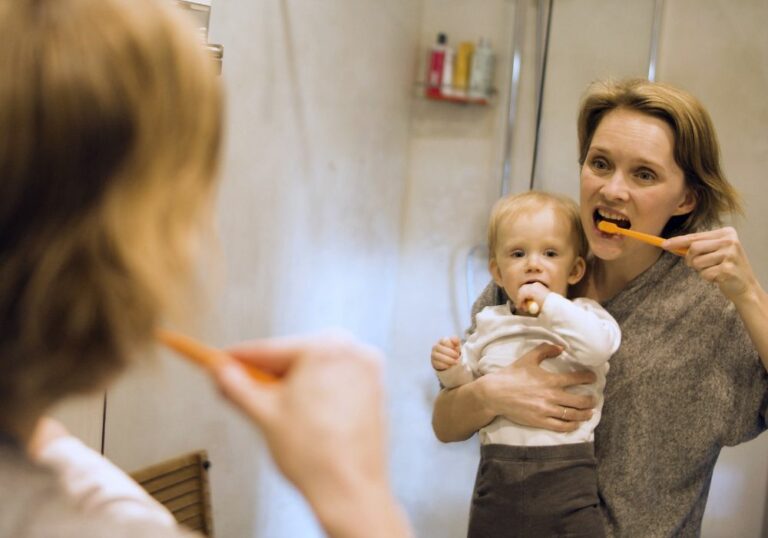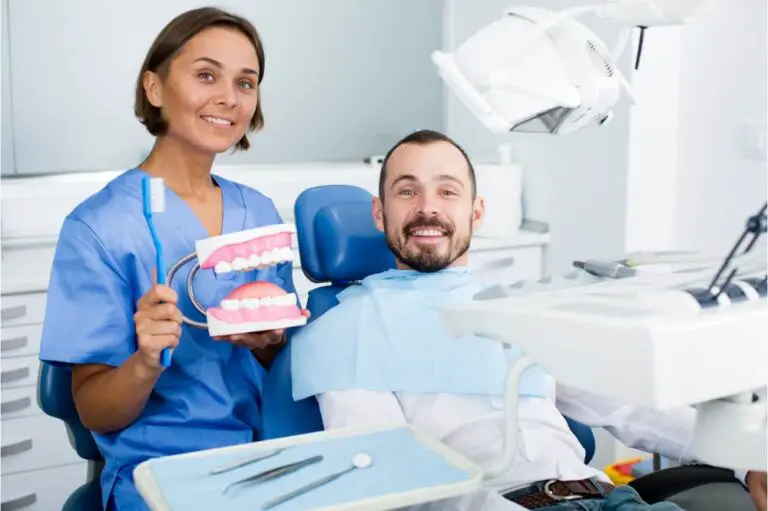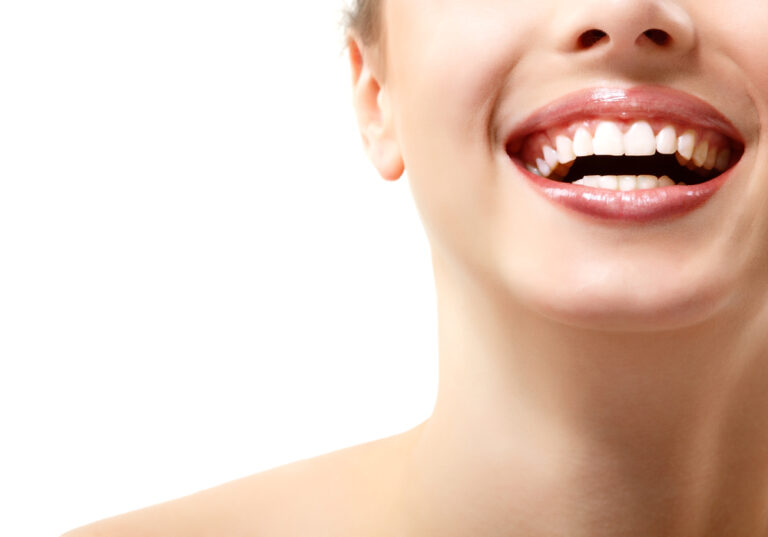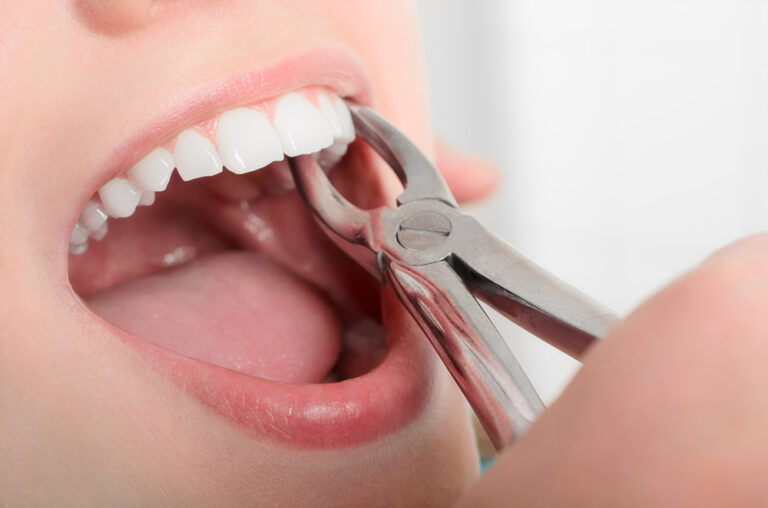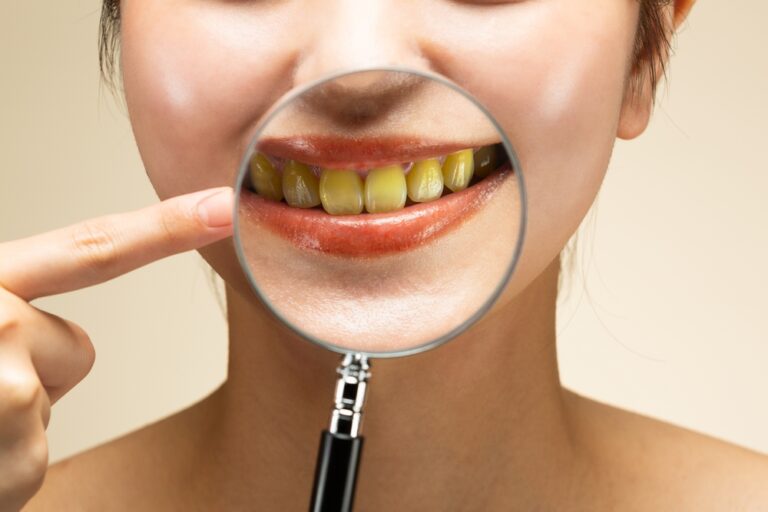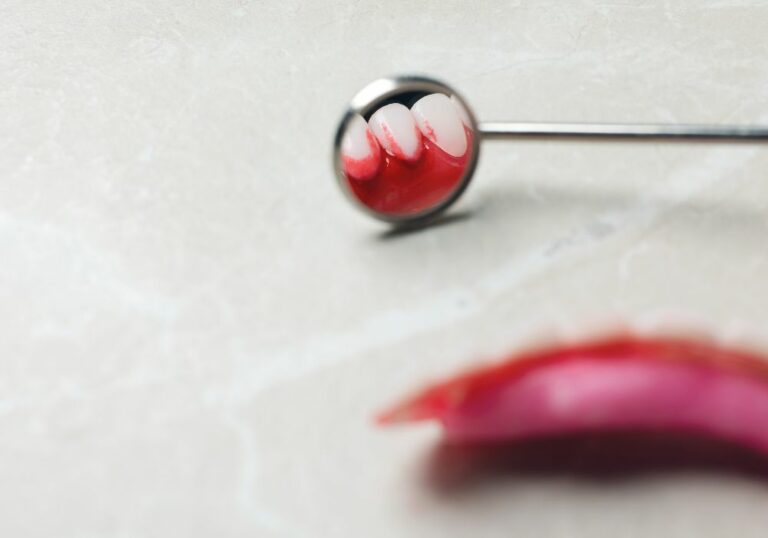It’s an unpleasant sensation when you’re brushing your teeth and suddenly feel a sharp pain in one area of your gums. This localized gum discomfort can seem to come out of nowhere. But it usually indicates a problem needing attention.
Gum pain and sensitivity localized to one spot is common. But it’s not normal. Letting it go untreated allows the issue to worsen over time. Understanding why your gum hurts in one area while brushing is key to finding relief through proper dental treatment.
What Causes Localized Gum Pain When Brushing?
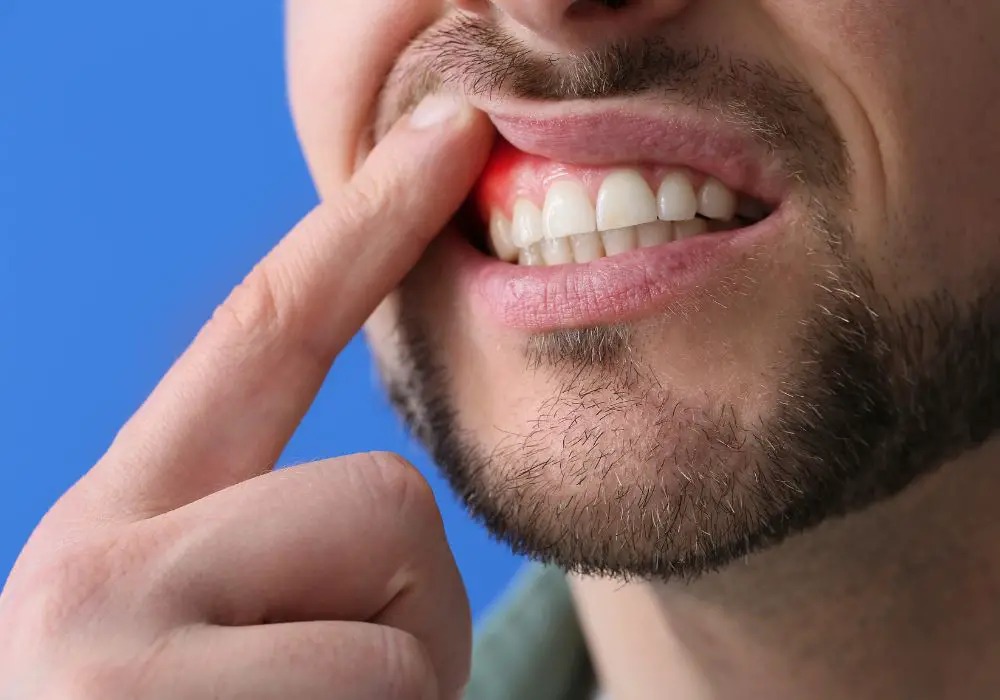
There are a number of potential causes of pain or irritation when brushing in a single gum spot:
Gingivitis
The most common cause of localized gum discomfort is gingivitis. Gingivitis is a mild form of gum disease caused by plaque buildup along the gumline. Plaque harbors bacteria that trigger inflammation and irritation.
As gingivitis progresses, plaque accumulates in hard-to-reach areas near the base of teeth and between teeth. This causes red, puffy gums that are tender to the touch. The inflammation is often confined to one area if plaque is particularly heavy there.
Brushing directly over swollen, inflamed gums puts pressure on the tissue and exposes sensitive nerve endings. This causes a painful or stinging sensation localized to that spot. While brushing helps remove some plaque, it also aggravates the existing gum irritation.
Plaque and Tartar Deposits
Plaque that remains on the teeth longer than 48 hours hardens into tartar or calculus. This rough, hardened deposit sticks firmly to the teeth, including at the gumline. Tartar buildup leads to gingivitis and more severe gum disease.
When a heavy plaque deposit has hardened into tartar at the base of one or more teeth, it can cause redness, swelling, and inflammation of the surrounding gums. Brushing and flossing over tartar can scratch and bother inflamed gums, making them hurt and bleed. The discomfort is contained to the area with the most significant tartar accumulation.
Tartar can only be removed by professional teeth cleaning. The roughness rubs and irritates gum tissue. A dentist or hygienist must scrape off tartar above and below the gumline. This is usually done during dental cleanings every six months to prevent a localized plaque problem from worsening.
Gum Recession
The gums can recede or pull away from teeth over time, exposing sensitive tooth roots. This gum recession is often localized to one area where brushing may be too abrasive or gum tissue is weaker. Exposed roots have no protective enamel and have direct nerve endings.
When brushing near receded gums, it’s easy to aggravate these unprotected tooth roots. Even gentle brushing may hit the root surface just right, causing a sharp pain. Exposed roots are also more prone to decay and temperature sensitivities. Localized gum recession can make one area of the mouth much more easily irritated during brushing.
Periodontal Disease
Untreated gingivitis can advance to periodontitis, a serious bacterial gum infection damaging the gums and tooth sockets. Periodontitis often first develops in one or a few areas where plaque deposits are heaviest.
As the infection worsens over time, it creates inflamed pockets around the tooth where pus may form. Brushing near the infected and retracted gum pockets causes pain and bleeding localized to the diseased sites. There may also be bad breath, loose teeth, and eventual tooth loss.
Canker Sores
Canker sores are small white or yellowish ulcers that occur inside the mouth – including along the gums. They have a red border and tend to be quite painful until they heal. Canker sores can be triggered by tissue injury, stress, spicy foods, illness, or hormonal shifts.
When a canker sore develops right where the bristles hit the gums, brushing can be very painful. The abrasion aggravates the ulcer. Canker sores usually heal within 1-2 weeks if kept clean. But while present, they can make brushing certain areas very uncomfortable.
Recent Dental Work
After having a filling, crown, extraction, or other dental procedure, the gums around that tooth may remain tender or irritated for several days. Inflammation results from injuring or manipulating the gum tissue during treatment. Brushing too forcefully over healing gums causes sensitivity.
Just Brushed Too Hard
Sometimes the gum hurts from brushing simply because you did it too vigorously and injured the tissue. Healthy gums can handle light pressure. But harsh, aggressive brushing or using stiff bristles can scrape and scratch the gums, making them sore. Easing up your brushing technique prevents this.
Serious Dental Issues
Less commonly, consistent localized pain when brushing may indicate cracked tooth syndrome, an abscess, oral cancer or other serious dental issues. See a dentist promptly if your gum hurts without apparent gum cause, or oral sores last longer than 2 weeks.
When to See Your Dentist
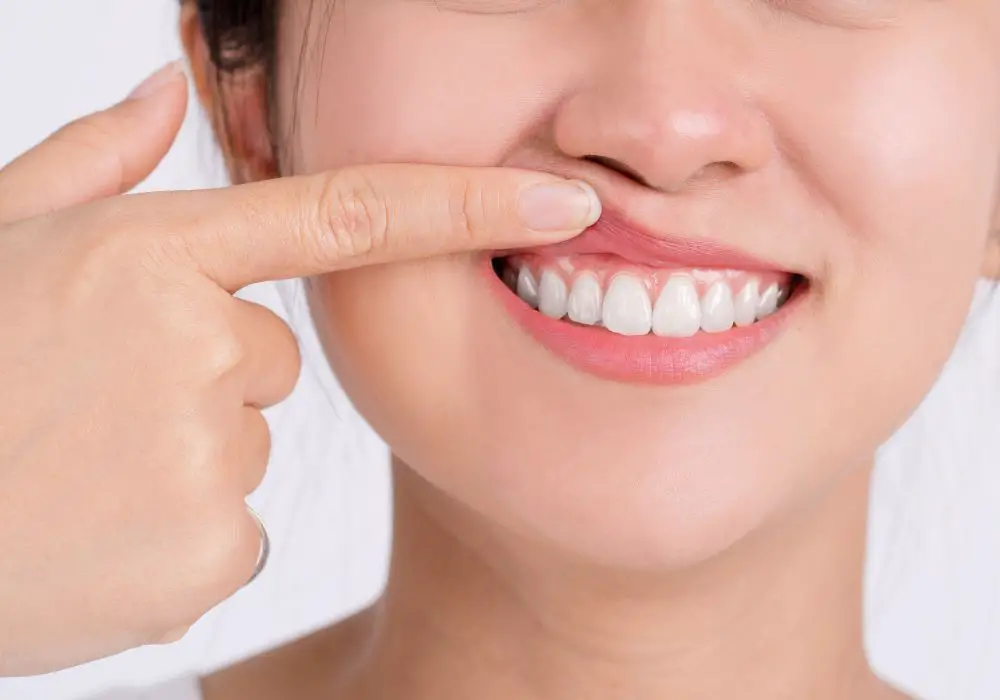
You should make an appointment with your dentist promptly if you experience any of the following:
- Severe constant pain that lasts more than 5-7 days
- Throbbing or radiating pain
- Bleeding, swelling, or pus
- Gums that are pulling away from teeth
- Bad breath or taste in the mouth
- Loose teeth, changes in bite
- No improvement with good oral hygiene
- Oral sores or lumps lasting beyond 2 weeks
- Unexplained gum pain without gingivitis signs
Don’t delay getting evaluated, even if the problem starts small. Any consistent discomfort when brushing specific areas warrants having your dentist investigate. An examination and x-rays can determine the cause and appropriate treatment.
Preventing Localized Gum Discomfort
Practicing excellent daily oral hygiene helps prevent gum irritation and plaque buildup that lead to painful brushing. Focus on these healthy habits:
- Brush gently twice daily – Use soft, round-bristled brush. Gently massage gums in circular motions at a 45-degree angle to teeth. Avoid sawing back and forth.
- Floss thoroughly once daily – Flossing removes plaque and food between teeth where brush can’t reach. This prevents gingivitis and swelling.
- Get regular professional cleanings – See your dentist or hygienist every 6 months for plaque and tartar removal from gumline areas near pain spots.
- Use antibacterial rinses – Swishing daily with antibacterial rinse helps control bacteria. Look for ADA-approved products like Crest, Listerine, ACT.
- Watch what you eat – Limit sugary foods that feed plaque bacteria. Eat a balanced, nutrient-rich diet. Stay hydrated.
- Don’t smoke – Smoking increases gum disease risk. Its heat and chemicals irritate oral tissues. Quitting is critical.
- Control health conditions – Diabetes, hormonal changes, stress, impaired immunity, medications, and other systemic issues can worsen gum problems. Staying healthy helps.
With diligent daily oral care and professional cleanings, you can keep your gums in good condition and avoid localized irritation and discomfort while brushing.
Getting Relief from Gum Discomfort When Brushing
If you experience localized gum sensitivity while brushing, here are some tips to help it feel better:
- Brush gently – Go slow and light. Position bristles at a slight angle along the gumline instead of jabbing straight down. Let bristles glide over gums.
- Avoid affected areas – If one spot is tender, work around it until it feels better, or skip it briefly if very painful.
- Take OTC pain relievers – Using ibuprofen, acetaminophen, aspirin, or similar medications can temporarily relieve discomfort.
- Use desensitizing toothpaste – Look for brands containing potassium nitrate or strontium chloride to numb pain.
- Rinse with warm salt water – Salt water helps draw out fluid, reduces inflammation, and soothing irritated spots.
- Apply ice packs – Ice helps minimize swelling and inflammation that make brushing uncomfortable.
- Try aloe vera gel – Pure aloe vera gel has anti-inflammatory properties to ease gum discomfort.
- Get dental treatment – See your dentist to address the underlying problem with scaling, antibiotics, grafting, or other solutions.
While home remedies provide temporary relief, you need professional dental treatment to resolve the cause of localized gum pain for good.
Professional Treatment Options
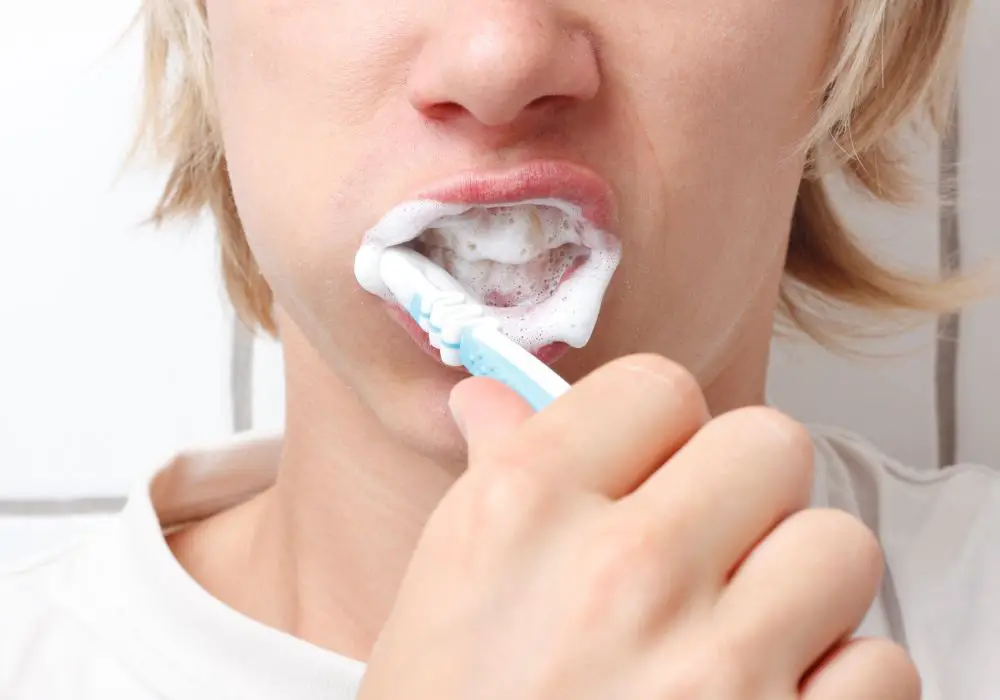
Based on your symptoms and exam findings, your dentist may recommend these treatments tailored to your specific condition:
- Scaling and root planing – Deep cleaning below gumline to remove plaque/tartar irritating one area. Smooths rough spots on roots.
- Medicinated chip or antimicrobial rinse – Place antibacterial chip near painful site. Rinse fights bacteria.
- Gum grafting – Surgical grafting to cover exposed roots causing sensitivity.
- Gum recontouring – Reshapes gumline to remove diseased tissue.
- Laser treatment – Laser light reduces inflammation and promotes soft tissue healing.
- Flap surgery – Deep cleaning and infection control under gums.
- Bone grafts – Grows back bone damaged by gum disease.
- Soft tissue grafts – Replaces lost gum tissue destroyed by disease progression.
- Growth factor application – Apply proteins to boost healing of damaged gum tissue.
- Oral antibiotics – Antibiotics kill stubborn bacterial infections.
The right treatments can effectively eliminate whatever is causing your localized gum discomfort when brushing – whether it’s gingivitis, recession, or other gum problems.
When to Expect Pain Relief
With proper oral hygiene and professional treatment, you should notice pain relief in the affected area within:
- 1-2 weeks for mild gingivitis.
- 2-4 weeks for more severe inflammation or infection.
- 6-8 weeks for issues requiring gum surgery and grafting.
Healing times vary based on disease severity and your body’s response to treatment. Inform your dentist if discomfort persists longer than expected. Additional interventions may be required. Consistent care is key to sustained relief.
Preventing Recurrence
Once your specific gum problem is resolved and immediate discomfort relieved, diligently continue good oral hygiene to keep the pain from recurring:
- Brush carefully twice daily
- Floss thoroughly once daily
- Rinse daily with antibacterial mouthwash
- Have professional cleanings every 6 months
- Don’t smoke or use smokeless tobacco
- Eat a balanced diet low in sugar
- Stay hydrated
- Manage health conditions properly
With daily dedication to gum health and regular dental visits, you can avoid localized gum sensitivity and make brushing comfortable again.
When to Seek a Second Opinion
See another dentist if:
- Your dentist can’t determine an apparent cause
- Discomfort persists after treatment
- Treatment doesn’t start within a few weeks
- Symptoms worsen or spread
- You don’t feel confident in the dentist’s skills
- Dentist immediately recommends gum surgery or extraction
Getting a second professional opinion can provide added insight and make sure nothing gets missed. A more specialized periodontist may be needed.
Questions and Answers About Localized Gum Pain When Brushing
Why does only one area of my gums hurt when I brush?
Localized gum pain usually signals a problem just in that spot – whether it’s gingivitis, gum recession, or a canker sore. Broader gum disease would normally cause pain in multiple areas.
What if it hurts when I brush one specific tooth?
Pain when brushing one tooth may indicate issues with that tooth, like cracks, decay, or defective dental work aggravating the surrounding gum. Switching toothpaste, brushing gentler, and seeing a dentist can help.
How do I tell the difference between gum disease and brushing too hard?
Gum disease shows classic signs of inflammation – redness, swelling, tenderness, bleeding. Brushing too hard causes sensitivity but no lasting inflammation or gum changes. Ease off your brushing pressure and see if symptoms resolve.
Why do my gums bleed in the same spot whenever I floss?
Repeated bleeding and soreness after flossing point to localized gingivitis or gum disease. Those areas have increased inflammation and weakened gum tissues. Consistently flossing will improve symptoms over time.
My dentist said I have a receding gum around one tooth. Why does it hurt to brush?
Gum recession exposes sensitive tooth roots not protected by enamel. Even gentle brushing can hit the root surface the wrong way and cause pain. See your dentist for grafts, desensitizing toothpaste, or bonding to cover the root.
What if my gums are shrinking and the roots are more exposed?
Increasing gum recession requires prompt dental evaluation and treatment. Exposed roots are at high risk for decay and sensitivity. Grafting receded areas can stimulate new gum growth and cover vulnerable roots to ease brushing discomfort.
Why do my gums still hurt after a deep cleaning at the dentist?
Some post-treatment soreness is normal during the healing process. But if pain persists more than several days or increases, call your dentist’s office. You may need medication or further treatment to resolve lingering infection and inflammation.
Key Takeaways
- Localized gum pain when brushing often arises from issues like gingivitis, periodontal disease, canker sores, tartar buildup, or receding gums in that area.
- See your dentist if pain is severe, persists, or is accompanied by other symptoms like bleeding or loose teeth.
- Practicing excellent daily oral hygiene helps prevent gum irritation that makes brushing uncomfortable.
- Professional cleanings, gum grafting, antibiotics, or other treatments can resolve gum discomfort based on the cause.
- Proper dental care, healthy habits, and regular checkups are key to preventing recurrence once discomfort is relieved.

